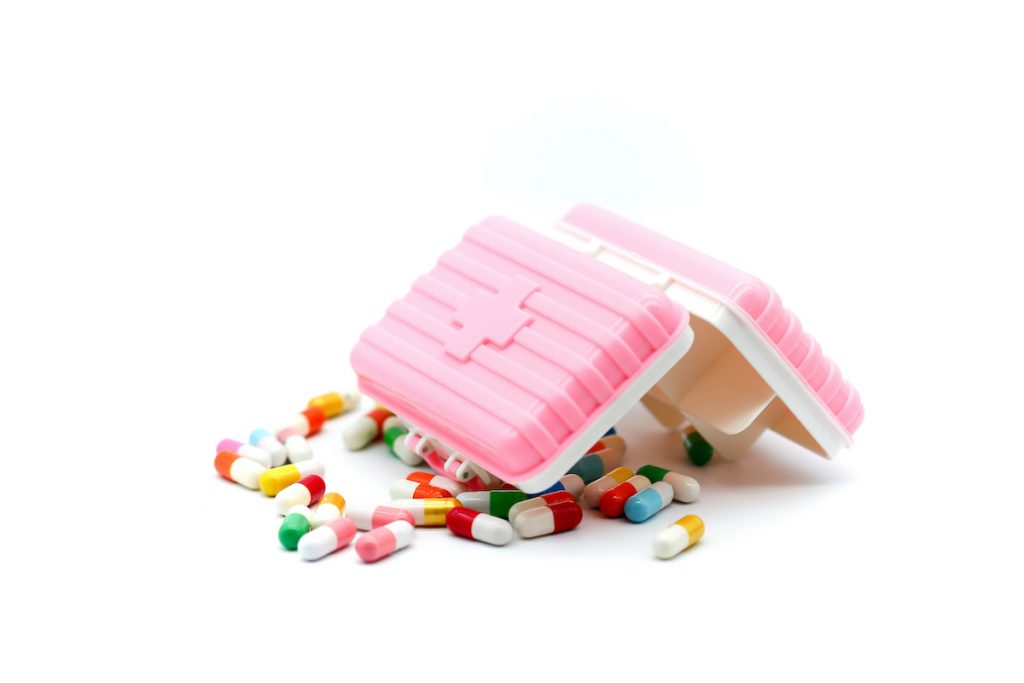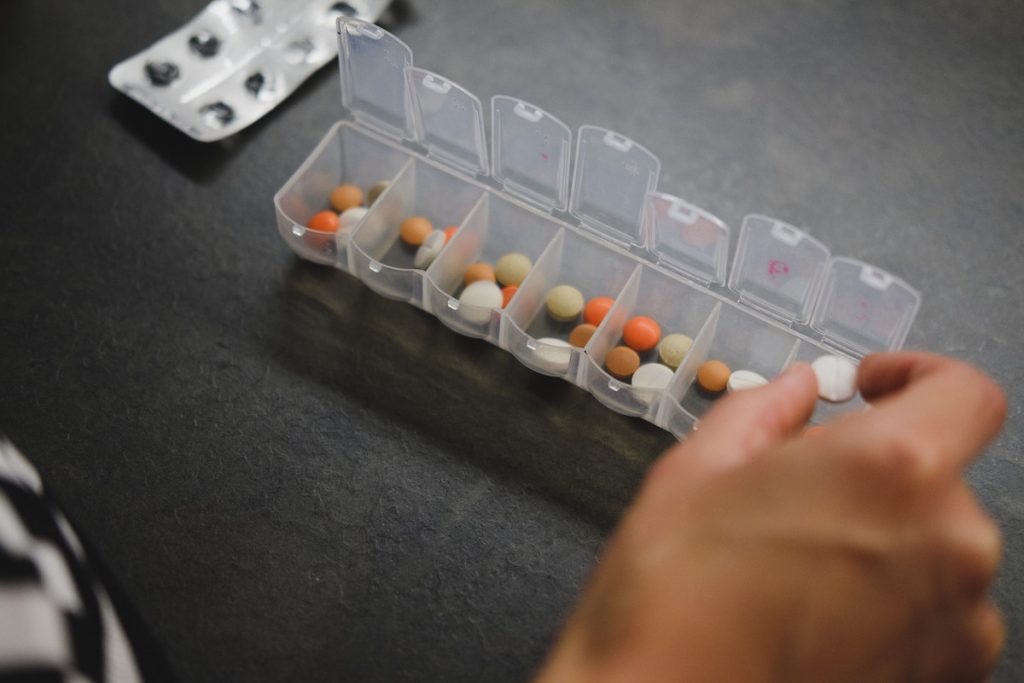
When maintenance antipsychotic therapy is indicated for chronic schizophrenia, optimal dosing can be a challenge. While it is often recommended that psychiatrists prescribe the “minimum effective dose” of antipsychotic medication, several factors can motivate overzealous dosing in clinical practice. Acute agitation and length-of-stay pressures in the inpatient setting can result in rapid titrations that “blow past” optimal doses well before the 4-6 weeks it takes to maximize antipsychotic response. With response in clinical trials involving schizophrenia defined by as little as a 20% reduction in symptoms and in recognition of the fact that partial positive symptom response is often the rule and other symptomatic domains like negative symptoms less likely to respond to pharmacotherapy, clinicians in both inpatient and outpatient settings may attempt to “squeeze more out” of medication through dose escalation.
A number of studies through the years have either failed to support the efficacy of such dose escalation practices (Dold et al., 2015) or have reported better outcomes with antipsychotic dose reduction (Van Putten et al., 1993; Suzuki et al., 2003; Wunderink et al., 2013), suggesting that “less is more.” This is unsurprising given the dose-related risk of common adverse events such as extrapyramidal and metabolic side effects (Baldessarini et al., 1998; Wu et al., 2022).
Equally unsurprising is that excessively low antipsychotic dosing in chronic schizophrenia risks loss of efficacy. Indeed, several recent meta-analytic studies (including one that I reviewed in my previous blog) have found that taking antipsychotic medications below recommended dose ranges is associated with a greater risk of relapse in chronic schizophrenia (Højlund et al., 2021; Ostuzzi et al. 2022). Two other meta-analyses similarly found an optimal dose range for the treatment of chronic schizophrenia where efficacy is maximised and adverse effects are minimised (Leucht et al., 2013; Sabe et al. 2021), suggesting that there is a Goldilocksian ideal (that is, an attainable “sweet spot” that is “just right”) for each antipsychotic medication.
Optimal dosing in FES is somewhat less clear. Although they are often lumped together or conflated, FES (first episode schizophrenia) is distinct from the more amorphous entity FEP (first episode psychosis) which may or may not progress to schizophrenia and may or may not require antipsychotic therapy (Pierre et al. 2021). Still, clinicians may be inclined to err on the side of low-dose antipsychotic therapy for both FEP and FES consistent with some treatment guidelines (Keating et al., 2019).
This blog reviews a new register-based cohort study that examined antipsychotic prescribing in FES and addresses the wisdom of non-standard dosing, adding much-needed clarity to the question of optimal antipsychotic dose-response in the early course of schizophrenia (Taipale et al., 2022).

Best practice antipsychotic treatment maximises its efficacy for people with first-episode schizophrenia, but optimal dosing isn’t always clear.
Methods
In order to “study the evolution of antipsychotic dose and risk of severe relapse” in FES, the authors examined a nationwide, register-based cohort of 23,499 patients who required hospitalisation for the first time with a diagnosis of schizophrenia in Finland from 1996-2014. To minimise survival bias, a subsample of 5,367 patients who were younger than 45-years of age at first diagnosis and had no previous use of antipsychotic medication during the previous year was selected as the study cohort. Follow-up data were examined from the point of first hospital discharge up until 5 years or after the fifth relapse. Relapse (defined by rehospitalisation due to psychosis more than 30 days following the previous hospitalisation with schizophrenia as the main discharge diagnosis) was the study’s primary outcome measure.
In the absence of register data on prescribed antipsychotic doses, antipsychotic exposure was calculated by “antipsychotic use episodes” modelled with the PRE2DUP method based on pharmacy records of reimbursed medication dispensing (Tanskanen et al., 2015). Based on this model, periods of antipsychotic use and non-use (with periods of hospitalisation excluded since patients could not relapse) were identified with temporal average dose estimates at each dispensing calculated by the sum of dispensed defined daily dose (DDD) amounts per day (as specified by the World Health Organization (WHO)) at the two previous dispensings divided by the outpatient time of those dispensings. In order to capture dosing centered around typical prescribing at 1, 1.5, and 2.0 DDD/day, antipsychotic dosing according to this estimation method was categorised for analysis within DDD ranges of <0.6, 0.6 to <0.9, 0.9 to <1.1, 1.1 to <1.4, 1.4 to <1.6, 1.6 to <1.9, 1.9 to <2.1, 2.1 to <2.4, and >2.4. Antipsychotics were treated as a class and analysed together rather than individually.
Occurrences of relapse were compared between the time periods of these dose categories versus the time periods with either standard DDD (0.9 to <1.1) or periods of non-use according to both within-individual and between-individual models. This analysis was also stratified according to the number of relapses with hazard ratios (HRs) calculated compared to antipsychotic non-use. The HRs for within-individual analysis were adjusted for time since cohort entry, cumulative number of previous relapses, antidepressant use, benzodiazepine, and related drug use with additional adjustments for age and sex in the between-individual analysis. In order to control for the possible effect of relapse due to antipsychotic rebound, a secondary analysis excluded patients who were changed to the lowest DDD category (<0.6) from a higher DDD category (>0.9) 6 months before relapse.
Results
Out of 5,367 patients, 64% were male and 36% female with a mean age of 29.5 years at the start of follow-up. Over the 5-year or fifth episode of relapse follow-up period (mean length 4.8 years), 43% of the cohort had no relapses, while 57% required rehospitalisation once (23%), twice (13%), 3 times (8.5%), 4 times (4.6%), or 5 times (8%). For those patients who did not relapse, antipsychotic doses decreased over the 5-year follow-up period from 1.24 to 1.11 DDD/day, whereas for those who relapsed, DDD increased after each new relapse from 1.22 DDD/day before the first relapse to 1.56 DDD/day before the fifth relapse.
When comparing each time period dose category to time periods of non-use according to both within-and between-individual analyses, a U-shaped relationship between antipsychotic dose and risk of relapse emerged with the lower risk associated with standard dosing (0.9 to <1.1 DDD/day) for those with up to 2 relapses. Comparing dose categories to standard dosing in patients, there was a significantly greater risk of relapse (HR 1.54) with low antipsychotic dose (<0.6 /day) in the within-individual analysis and with all low dose categories (HR 1.37 to 1.55) in the between-individual analysis. The higher dose categories were likewise associated with a significantly greater risk of relapse at 1.4 to <1.6 (HR 1.3), 1.9 to <2.1 (HR 1.8), and >2.4 (HR 2.9) DDD/day in within-individual analysis and at all dose categories (HR 1.26 to 2.46) other than 2.2 to <2.4 in the between-individual analysis.
The HR for relapse risk for antipsychotic use vs. non-use increased following the second relapse. For those with 3 to 5 relapses, there were no significant differences in relapse rates between dose categories with the exception of a greater risk of relapse at >2.4 DDD/day (with a wide confidence interval).
Excluding patients who reduced their dose from below 0.9 DDD/day, as well as those who recently reduced their antipsychotic dose from 0.6 to <0.9 to <0.6 DDD/day during the 6 months before relapse, had minimal impact on relapse risk.

Standard antipsychotic medication dosing was associated with the lowest rate of relapse in people with first-episode schizophrenia.
Conclusions
The findings mirror those of other studies involving chronic schizophrenia that have demonstrated that:
- Relapse is reduced with antipsychotic use compared to non-use
- For those taking antipsychotic medications, the lowest risk of relapse is associated with standard dosing.
This study’s finding that both lower doses and higher antipsychotic doses were associated with greater relapse suggests that the optimal antipsychotic dose range in FES is not very different than more chronic schizophrenia (for reference, the WHO DDD/day for some commonly used antipsychotic medications are haloperidol 8 mg/day, perphenazine 20 mg/day, risperidone 5 mg/day, olanzapine 10 mg/day, ziprasidone 80 mg/day, quetiapine 400 mg/day, aripiprazole 15 mg/day, and clozapine 300 mg/day).
Notably, however, the U-shaped dose-response relationship was only found for those with 2 relapses or less—beyond 2 relapses, there was no significant association between dose and relapse risk effects. Furthermore, the risk of relapse on medications compared to no medications increased with each relapse within the 5-year follow-up period, consistent with diminishing antipsychotic effectiveness. Still, regardless of relapse number, the overall risk of relapse remained lower with antipsychotic use compared to non-use.
Dosing patterns over time diverged with average dose increases among the 57% of the sample who relapsed and modest dose decreases among the 43% who did not. However, the average DDD/day for both groups was greater than 1 DDD/day. For those with multiple relapses, there was no evidence of increasing responsiveness with dose escalation.
Removing patients with recent reductions in dose in the 6 months prior to relapse had little effect on HRs compared to the sample inclusive of those patients. Therefore, the study did not find evidence that relapse rates were affected by antipsychotic rebound psychosis due to “dopamine super-sensitivity.”

Optimal antipsychotic dosing following first episode schizophrenia is not very different from dosing in chronic schizophrenia.
Strengths and limitations
This is the first published study exploring the relationship between antipsychotic dose and risk of relapse in first episode schizophrenia (FES). The main study outcome was relapse as defined by hospitalisation such that it is a study of “real-world” effectiveness rather than symptom reduction efficacy.
The focus on a cohort of patients with FES is particularly useful in disentangling them from those with FEP and more chronic schizophrenia. However, since the study cohort was defined by first hospitalisation for schizophrenia and given that the average duration of untreated psychosis in schizophrenia is about 2 years, it could be argued that the patients in this study were not truly “first-episode.” Furthermore, since the cohort was followed for 5 years or 5 relapses, they were clearly not first-episode after the first hospitalisation and some would qualify as having chronic schizophrenia. Since some patients with schizophrenia are never hospitalised, it is also possible that the cohort represents a population with a more severe illness course. The study, therefore, informs care about the early course of schizophrenia for patients who require hospitalisation more than FES per se.
Because the register database did not include prescribed daily doses, the authors calculated dosing based on the PRE2DUP method. A defined daily dose is, therefore, an estimate and does not take into account the possibility of partial adherence. Furthermore, since the PRE2DUP method was based on outpatient dosing while excluding dosing during hospitalisation, conclusions about dosing during acute relapse are limited and more relevant to maintenance therapy and relapse prevention.
Antipsychotic treatment was considered as a whole in the study rather than examining individual antipsychotic medications. Thus, it is possible that it might be beneficial to lower or higher doses of certain medications, although the study’s conclusions about DDD is consistent with optimal dosing findings from other meta-analytic studies (Leucht et al., 2013; Sabe et al. 2021). The study also did not allow for the examination of possible polypharmacy involving multiple antipsychotic medications. Although the statistical analysis adjusted for antidepressant and benzodiazepine use, it does not appear to have adjusted for the use of other adjunctive medications such as lithium or divalproex.
Finally, since only 21% of the sample had 3-5 relapses, it is possible that some of the non-significant findings about dose might be attributable to type II error.

The study did not allow the examination of possible polypharmacy of people with first-episode psychosis involving multiple antipsychotic medications.
Implications for practice
Consistent with the current literature, this study indicates that standard antipsychotic dosing is best for relapse prevention. Clinicians should resist the urge to utilise low-dose antipsychotic therapy in the early years of schizophrenia requiring hospitalisation.
Also consistent with previous research (Zhu et al., 2017; Takeuchi et al., 2018), the study found evidence of diminishing responsiveness of antipsychotic treatment with multiple relapses despite a pattern of dose escalation for those who relapsed more than 2 times. Since higher antipsychotic dosing does not mitigate the lower treatment response found in subsequent relapse episodes, clinicians should be wary of pushing the antipsychotic dose out of desperation when satisfactory responses are not achieved with standard dosing. It might, for example, be more prudent to consider a trial of clozapine for the treatment of refractory symptoms or to augment pharmacotherapy by maximising psychotherapeutic and psychosocial interventions.
Taken in aggregate, this study indicates that both low doses and high doses of antipsychotic medication are suboptimal in the aftermath of FEP. Standard antipsychotic dosing appears to be “just right,” even in the setting of subsequent episodes of relapse.

Under-dosing and over-dosing antipsychotic medications for relapse prevention in early schizophrenia should be avoided.
Statement of interests
None.
Links
Primary paper
Taipale H, Tanskanen A, Correll CU, Tiihonen J. Real-world effectiveness of antipsychotic doses for relapse prevention in patients with first-episode schizophrenia in Finland: a nationwide, register-based cohort study. Lancet Psychiatry 2022; 9:271-279.
Other references
Baldessarini RJ, Cohen BM, Teicher MH. Significance of neuroleptic dosing and plasma level in the pharmacological treatment of psychoses. Arch Gen Psychiatry 1988; 45:79-91.
Dold M, Fugger G, Aigner M, Lanzenberger R, Kasper S. Dose escalation of antipsychotic drugs in schizophrenia: A meta-analysis of randomized controlled trials. Schizophrenia Research 2015; 166:187-193.
Højlund M, Kemp AF, Haddad PM, Neill JC, Correll CU. Standard versus reduced dose of antipsychotics for relapse prevention in multi-episode schizophrenia: A systematic review and meta-analysis of randomised controlled trials. Lancet Psychiatry 2021; 8:471-476.
Keating D, McWilliams S, Schneider I, Hynes C, Cousins G, Strawbridge J, Clarke M. Pharmacological guidelines for schizophrenia: A systematic review and comparison of recommendations for the first episode. BMJ Open 2017; 7:e013881.
Leucht S, Cipriani A, Spinelli L, Maviridis D, Orey D, Richter F, Samara M, Barbui C, Engel RR, Geddes JR, Kissling W, Stapf MP, Lassig B, Salanti G, Davis JM. Comparative efficacy and tolerability of 15 antipsychotic drugs in schizophrenia: A multiple-treatments meta-analysis. Lancet 2013; 382-951-962.
Ostuzzi G, Vita G, Bertoloni F, Tedeschi F, De Luca B, Gastaldon C, Nosé M, Papola D, Purgato M, Del Giovane C, Correll CU, Barbui C. Continuing, reducing, switching, or stopping antipsychotics in individuas with schizophrenia-spectrum disorders who are clinically stable: a systematic review and network meta-analysis. Lancet Psychiatry 2022; 9:614-624.
Pierre JM. Diagnostic uncertainty, antipsychotic dosing, and optimal psychosocial interventions: unanswered questions in first-episode psychosis. Schizophr Res 2021; 228:600-601.
https://doi.org/10.1016/j.schres.2020.11.042
Sabe M, Zhao N, Crippa A, Kaiser S. Antipsychotics for negative and positive symptoms of schizophrenia: Dose-response meta-analysis of randomized controlled acute phase trials. NPJ Schizophrenia 2021; 7:43.
Suzuki T, Uchida H, Tanaka KF, Tomita M, Tsunoda K, Nomura K, Takano H, Tanabe A, Watanabe K, Yagi G, Kashima H. Reducing the dose of antipsychotic medications for those who had been treated with high-dose antipsychotic polypharmacy: an open study of dose reduction for chronic schizophrenia. Int J Clin Psychopharmacol 2003; 18:323-329.
Tanskanen A, Taipale H, Koponen M, Tolppanen A-M, Hartikainen S, AHonen R, Tiihonen J. From prescription drug purchases to drug use periods – a second generation method (PRE2DUP). Medical Informatics and Decision Making 2015; 15:21.
Takeuchi H, Siu C, Remington G, Fervaha G, Zipursky RB, Foussias G, Agid O. Dose relapse contribute to treatment resistance? Antipsychotic response in first- vs. second-episode schizophrenia. Neuropsychopharmacology 2018; 44:1036-1042.
Van Putten T, Marshall BD, Liberman R, Mintz J, Kuehnel TG, Bowen L, Aravagiri M, Marder SR. Systematic dose reduction in treatment-resistant schizophrenic patients. Psychopharm Bull 1993; 29:315-320.
Wu H, Siafis S, Hamza T, Scheider-Thoma J, Davis JM, Salanti G, Leucht S. Antipsychotic-induced weight gain: Dose-response meta-analysis of randomized controlled trials. Schizophr Bull 2022; 48:643-654.
Wunderink L, Nieboer RM, Wiersma D, Sytema S, Nienhuis FJ. Recovery in remitted first-episode psychosis at 7 Years of follow-up of an early dose reduction/discontinuation or maintenance treatment strategy: Long-term follow-up of a 2-Year randomized clinical trial. JAMA Psychiatry 2013; 79:913-920.
Zhu Y, Li C, Huhn M, Rothe P, Krause M, Bighelli I, Schneider-Thomas J, Leucht S. How well do patients with a first episode of schizophrenia respond to antipsychotics: a systematic review and meta-analysis. Eur Neuropsychopharmacol 2017; 27:835-844.
Photo credits
- Photo by Christina Victoria Craft on Unsplash
- Photo by Laurynas Mereckas on Unsplash
- Photo by Towfiqu barbhuiya on Unsplash
